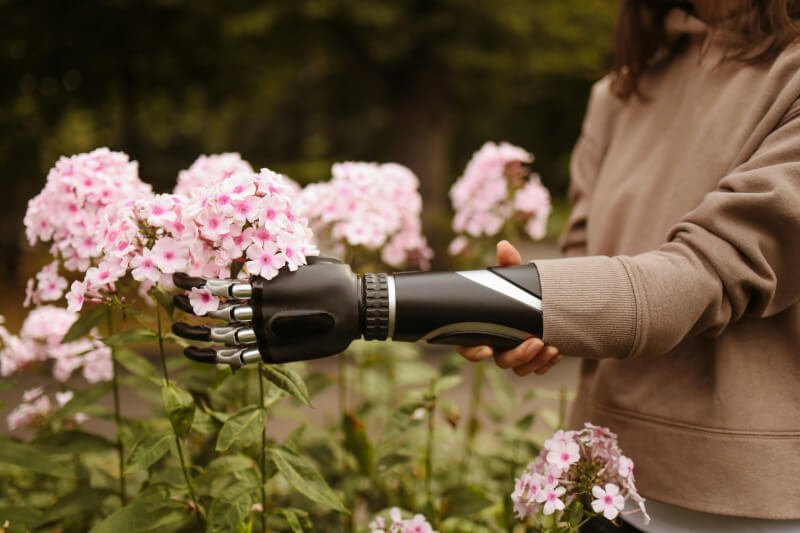If you’re a plant lover living in a cramped city apartment, don’t despair! You can still cultivate your own mini oasis of exotic plants with a little creativity and these urban gardening tips. Say goodbye to the notion that limited space means limited greenery, because with these expert suggestions, you’ll discover how to make the most out of your small area and transform it into a vibrant and thriving urban garden. From utilizing vertical space to choosing the right containers, this article will provide you with all the guidance you need to bring a touch of tropical paradise to your urban dwelling.
Choosing the Right Exotic Plants
When it comes to choosing exotic plants for your urban garden, conducting thorough research is essential. Look into the different types of exotic plants that are suitable for your climate and the available space you have. Consider the size of the plants at maturity and ensure they can fit comfortably in your garden. Take into account factors such as their growth habits, sunlight requirements, and watering needs. By researching and selecting the right exotic plants, you can set yourself up for success in your urban garden.
Researching Different Exotic Plants
Begin by researching the various exotic plants that pique your interest. Take the time to learn about their unique characteristics, growth patterns, and maintenance requirements. Some plants may be more suitable for indoor gardening while others thrive in outdoor environments. Consider factors such as the amount of sunlight they need, temperature requirements, and their tolerance for fluctuations in humidity levels. By conducting thorough research, you can make informed decisions and select exotic plants that will thrive in your specific growing conditions.
Considering Space and Climate Constraints
When choosing exotic plants for your small space, it’s important to consider the limitations imposed by the size of your garden and the climate in your area. Take stock of the available space and determine how many plants you can realistically accommodate without overcrowding. Consider the height and width of the plants at maturity, ensuring they will not overshadow or impede the growth of other plants. Additionally, assess the climate in your area to determine whether the exotic plants you choose are compatible with the temperature, humidity, and light conditions of your urban environment.
Selecting Suitable Containers
In urban gardening, where space is often limited, choosing the right containers for your exotic plants is crucial. Opt for containers that are large enough to accommodate the root systems of your plants while allowing for proper drainage. Consider the materials of the containers, ensuring they are durable and can withstand the elements in your outdoor garden. For indoor gardening, choose containers that complement your interior decor while providing adequate drainage to prevent waterlogging. By selecting suitable containers, you can optimize the growth and health of your exotic plants, even in small spaces.
Identifying Plants that Thrive in Low Light Conditions
If you have limited access to sunlight in your urban garden, it’s important to identify exotic plants that can thrive in low light conditions. Some plants, such as snake plants, peace lilies, and philodendrons, are known to tolerate low light environments. These plants can be excellent choices for indoor gardening or for outdoor areas that receive minimal direct sunlight. By selecting plants that are well-suited for low light conditions, you can still enjoy the beauty of exotic plants in your urban garden, even in areas with limited natural light.
Preparing the Growing Space
Before planting your exotic plants, proper preparation of the growing space is essential. This involves assessing the available sunlight, clearing and cleaning the area, creating proper drainage, and preparing the soil for planting.
Assessing Available Sunlight
The amount of sunlight your exotic plants receive can greatly impact their growth and overall health. Take note of the areas within your urban garden that receive the most sunlight throughout the day. Monitor and observe these areas to determine the duration and intensity of direct sunlight. Different plants have varying sunlight requirements, so it’s crucial to choose the right locations for planting based on the specific needs of your exotic plants.
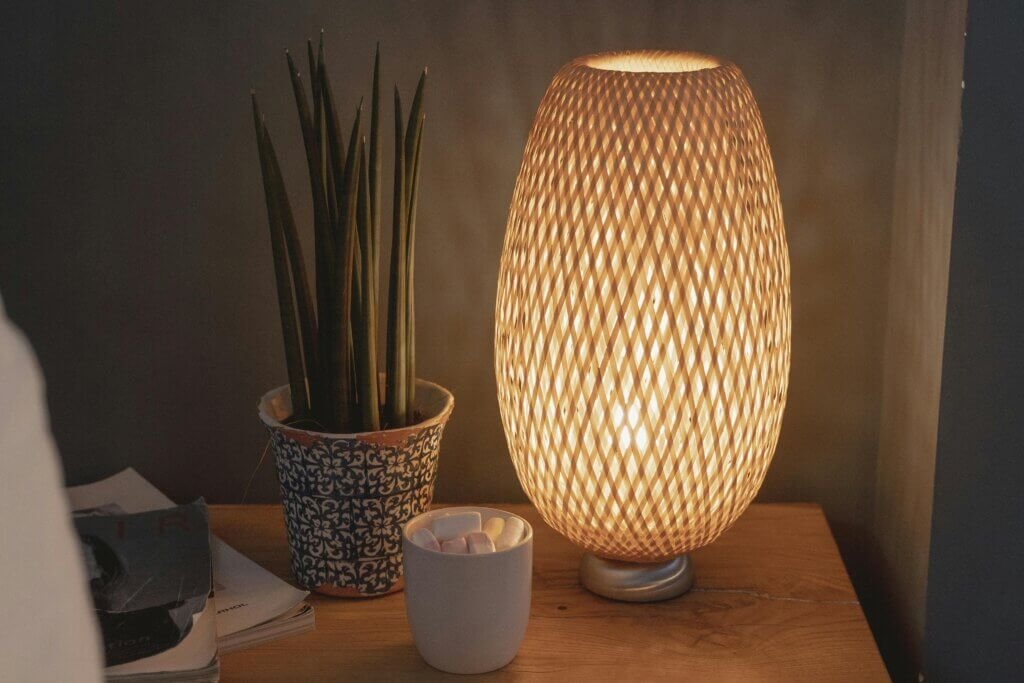
Clearing and Cleaning the Area
Before planting your exotic plants, it’s important to clear the designated area of any weeds, debris, or unwanted plants. This ensures that your plants have ample space and resources to grow. Remove any rocks, sticks, or other obstacles that may hinder root development or impede the growth of your plants. By providing a clean and clear space, you create an optimal environment for your exotic plants to thrive.
Creating Proper Drainage
Proper drainage is essential for the health of your exotic plants. Poor drainage can lead to waterlogging, root rot, and other issues that can potentially harm or kill your plants. Ensure that the area where you plan to plant your exotic plants allows excess water to drain efficiently. If the soil in your urban garden is compacted or doesn’t drain well naturally, consider adding organic matter or using raised beds to improve drainage. By providing proper drainage, you can prevent water-related issues and promote the long-term health of your exotic plants.
Preparing the Soil for Planting
Preparing the soil is a crucial step in growing exotic plants. Assess the quality of the soil in your urban garden and determine whether it requires any amendments. Exotic plants often have specific soil requirements, so it’s important to tailor the soil conditions to meet their needs. Add organic matter, such as compost or well-rotted manure, to improve soil fertility and structure. Incorporate nutrients, such as slow-release fertilizers or organic amendments, to provide essential elements for plant growth. By preparing the soil properly, you can create an optimal growing environment for your exotic plants and promote their overall health and vitality.
Providing Adequate Watering
Watering your exotic plants correctly is crucial for their growth and survival. Understanding their watering needs, implementing proper watering techniques, using drip irrigation systems, and monitoring soil moisture levels are all key aspects of providing adequate water to your exotic plants.
Understanding Exotic Plants’ Watering Needs
Exotic plants have different watering requirements compared to more common garden plants. It’s important to research and understand the specific watering needs of the exotic plants you have chosen. Some plants may require more frequent watering, while others prefer drier soil conditions. Factors such as the plant’s natural habitat, growth stage, and climate can influence its watering needs. By understanding these requirements, you can provide your exotic plants with the appropriate amount of water to ensure their optimal growth and prevent issues such as overwatering or underwatering.
Implementing Proper Watering Techniques
When watering your exotic plants, it’s important to employ proper techniques to ensure efficient uptake of water by the roots. Water the plants deeply and evenly, allowing the water to penetrate the root zone. Avoid shallow watering, as it can promote the development of shallow root systems that are susceptible to drought stress. Consider using a watering can or a garden hose with a gentle spray nozzle to provide a gentle and even distribution of water. By implementing proper watering techniques, you can prevent water wastage and promote the healthy growth of your exotic plants.
Using Drip Irrigation Systems
Drip irrigation systems can be a convenient and efficient way to water your exotic plants. These systems deliver water directly to the plant’s root zone, minimizing water loss through evaporation or runoff. Drip irrigation systems also help ensure that water is distributed evenly, preventing overwatering in some areas and underwatering in others. Consider installing a drip irrigation system in your urban garden to simplify the watering process and provide consistent moisture to your exotic plants.
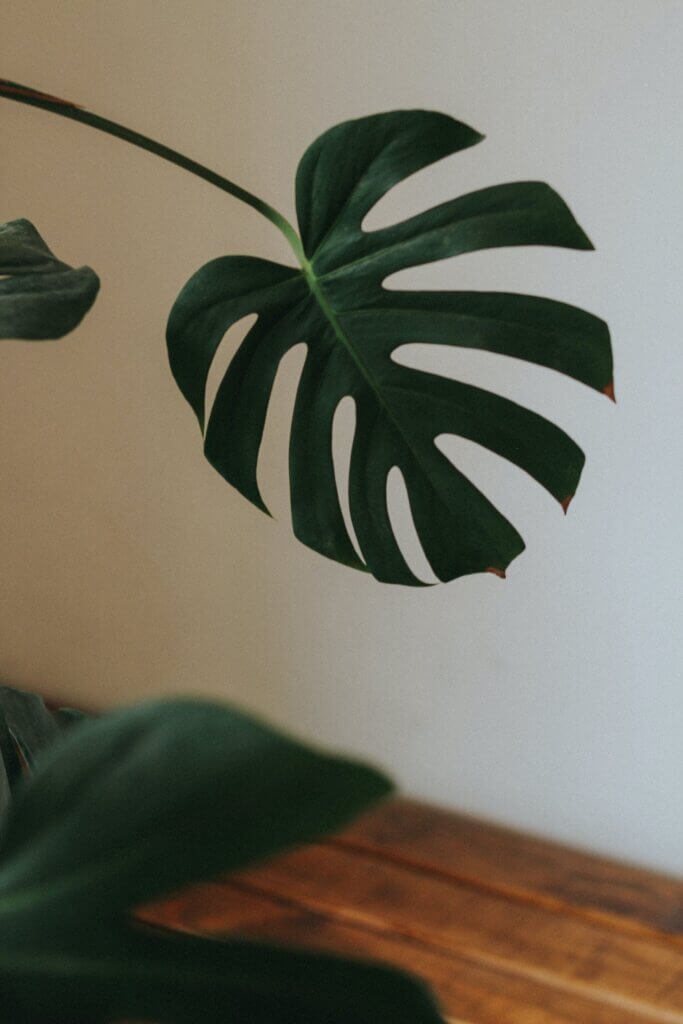
Monitoring Soil Moisture Levels
Regularly monitoring the moisture levels in the soil is important for maintaining the health and vitality of your exotic plants. Use a soil moisture meter or simply insert your finger into the soil to determine whether watering is necessary. Avoid overwatering, as it can lead to root rot and other water-related problems. On the other hand, underwatering can cause stress and damage to your plants. By keeping a close eye on the moisture levels in the soil, you can adjust your watering schedule accordingly and ensure that your exotic plants receive the proper amount of water for optimal growth.
Fertilizing and Nutrient Management
Proper fertilizing and nutrient management are crucial for the health and vitality of your exotic plants. Choosing the right fertilizer, understanding your exotic plants’ nutrient requirements, implementing organic fertilizers, and mulching to enhance soil fertility are key aspects of effective fertilization.
Choosing the Right Fertilizer
Selecting the right fertilizer is essential for providing your exotic plants with the necessary nutrients for growth. Different plants have different nutritional needs, so it’s important to choose a fertilizer that is specifically formulated for your exotic plants. Look for fertilizers that contain a balanced ratio of essential nutrients such as nitrogen, phosphorus, and potassium (NPK). Consider using slow-release fertilizers to provide a steady supply of nutrients over time. It’s also helpful to choose fertilizers that are suitable for the growing medium and pH level of your urban garden. By choosing the right fertilizer, you can ensure that your exotic plants receive the necessary nutrients for healthy growth.
Understanding Exotic Plants’ Nutrient Requirements
Exotic plants have specific nutrient requirements that should be met to promote their optimal growth and overall health. Research the specific nutrient needs of the exotic plants you are growing, paying attention to their macros and micronutrient requirements. Some plants may require higher levels of nitrogen for lush foliage growth, while others may require more phosphorus for enhanced flowering. Understand the nutrient preferences of your exotic plants to ensure that their nutritional needs are adequately met throughout their growing seasons.
Implementing Organic Fertilizers
Using organic fertilizers can be an excellent option for promoting the long-term health and sustainability of your exotic plants. Organic fertilizers are derived from natural sources such as compost, manure, or plant materials, and they provide a slow-release form of nutrients to the plants. They also help improve soil structure, water retention, and overall soil fertility. Consider incorporating organic fertilizers into your fertilization routine to enhance the health and productivity of your exotic plants while minimizing the use of synthetic chemicals.
Mulching to Enhance Soil Fertility
Mulching is a beneficial practice for improving soil fertility and moisture retention in your urban garden. Apply a layer of organic mulch, such as wood chips or straw, around the base of your exotic plants. Mulch helps suppress weed growth, prevent soil erosion, and regulate soil temperature. As the mulch breaks down, it also adds organic matter to the soil, enhancing its fertility and promoting beneficial microbial activity. Mulching can be particularly useful in small urban gardens, where conserving moisture and optimizing soil health are essential for the survival and growth of exotic plants.
Dealing with Pests and Diseases
Pests and diseases can pose a significant threat to the health and productivity of your exotic plants. Identifying common pests and diseases, implementing prevention methods, using natural and organic pest control methods, and seeking professional help when needed are all important aspects of pest and disease management.
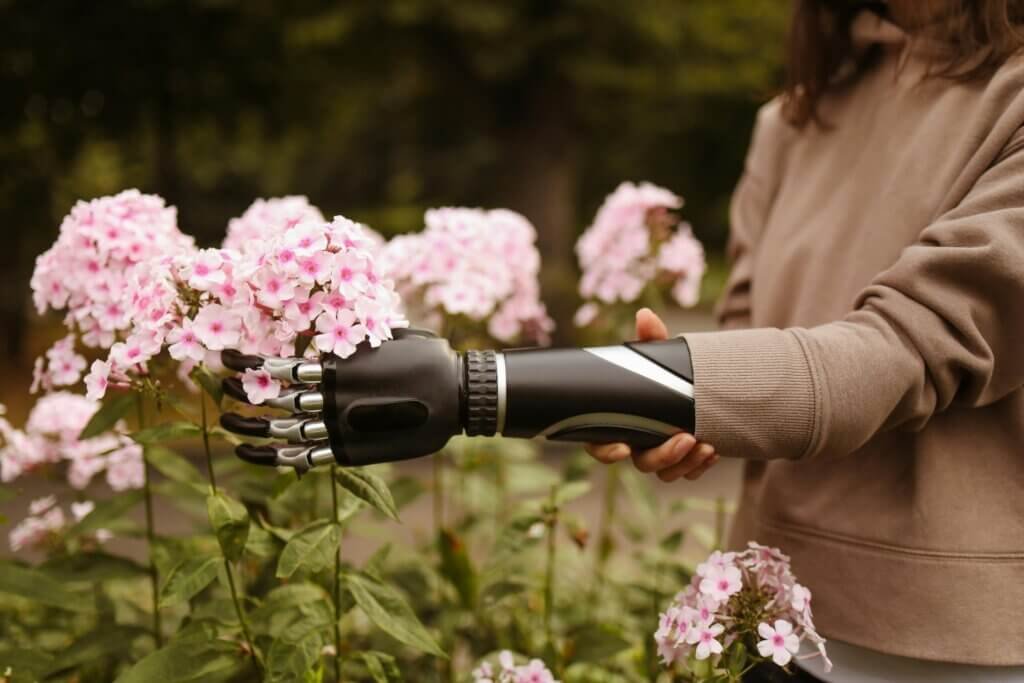
Identifying Common Pests and Diseases
Become familiar with the common pests and diseases that may affect your exotic plants. Research and observe the signs and symptoms of these pests and diseases, such as yellowing leaves, wilting, or the presence of pests like aphids or spider mites. Some common pests for exotic plants are scale insects, mealybugs, and whiteflies. By identifying these pests and diseases early on, you can take appropriate action to prevent or control their infestation and minimize potential damage to your exotic plants.
Implementing Prevention Methods
Preventing pests and diseases is always better than having to deal with their consequences. Implement preventive measures to minimize the risk of infestations or infections. Keep your urban garden clean and tidy, removing any fallen leaves, dead plant material, or debris that may attract pests or create breeding grounds for diseases. Regularly inspect your exotic plants for signs of stress or infestation, and quarantine any affected plants to prevent the spread of pests or diseases. By implementing preventive methods, you can maintain the health and vitality of your exotic plants and reduce the need for more aggressive pest or disease control measures.
Using Natural and Organic Pest Control Methods
When it comes to managing pests and diseases in your urban garden, opting for natural and organic pest control methods can be both effective and environmentally friendly. There are several natural remedies and practices you can employ to control pests and diseases without resorting to harsh chemicals. Consider using insecticidal soaps, neem oil, or beneficial insects such as ladybugs to control pest populations. For diseases, implementing good cultural practices like proper watering, adequate spacing between plants, and promoting good air circulation can help prevent infections. By using natural and organic pest control methods, you can protect your exotic plants while minimizing the impact on beneficial insects and the environment.
Seeking Professional Help if Needed
In some cases, professional help may be necessary to effectively manage pests and diseases in your urban garden. If you are unable to control infestations or infections using natural or organic methods, consult with a professional horticulturist, extension service, or experienced gardener. They can provide specialized knowledge and recommend appropriate interventions to protect your exotic plants. It’s important to address pest and disease issues promptly to prevent further damage and ensure the long-term health of your exotic plants.
Pruning and Training Techniques
Proper pruning and training techniques can help shape and maintain the growth of your exotic plants. Understanding the benefits of pruning and training, pruning to promote growth and flowering, training plants to grow vertically, and pruning to maintain plant size are key aspects of this practice.
Understanding Pruning and Training Benefits
Pruning and training your exotic plants offer several benefits in terms of aesthetics, health, and overall plant performance. Pruning helps promote fuller growth, enhances the plant’s shape and appearance, and encourages branching. It also helps remove dead, damaged, or diseased plant parts, reducing the risk of pests or diseases. Training plants to grow vertically can maximize space utilization in small urban gardens and create a visually appealing display. By practicing proper pruning and training techniques, you can shape your exotic plants to your desired form and achieve a healthy and vibrant garden.
Pruning to Promote Growth and Flowering
Pruning plays a crucial role in promoting the growth and flowering of your exotic plants. Different plants may require different types and frequencies of pruning. Some plants benefit from regular pruning to remove spent flowers or encourage branching, while others may require more aggressive pruning to control their growth or rejuvenate older plant parts. Research the specific pruning requirements of your exotic plants and develop a pruning regime accordingly. By pruning your plants correctly, you can stimulate new growth, enhance flowering, and maintain a compact and healthy overall plant structure.
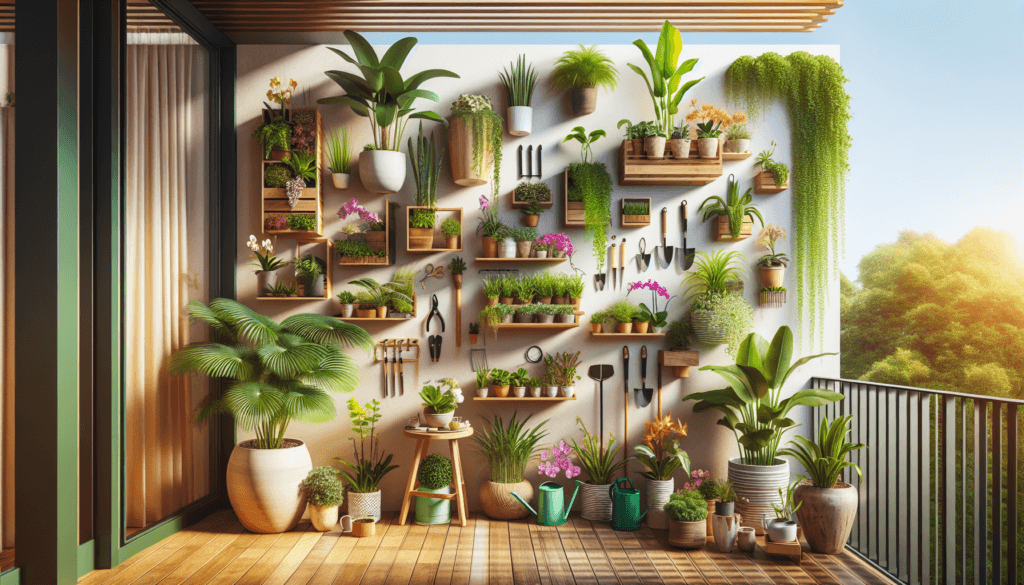
Training Plants to Grow Vertically
In small urban gardens, training your exotic plants to grow vertically can be a useful technique to optimize space utilization. Utilize trellises, stakes, or other support structures to guide your plants upwards and create an attractive vertical element in your garden. Ensure that the support structures are sturdy and appropriate for the height and weight of your plants. Regularly check and adjust the position of your plants as they grow to ensure they are properly trained. By training your exotic plants to grow vertically, you can make the most of limited space while adding visual interest to your urban garden.
Pruning to Maintain Plant Size
One of the challenges of growing exotic plants in a small space is managing their size. Some exotic plants can quickly outgrow their allocated space, becoming overcrowded or overshadowing other plants. Pruning can be an effective technique to control the size of your plants and maintain a proportional and manageable garden. Regularly inspect your exotic plants and prune them as needed to prevent them from becoming too large or spreading uncontrollably. By pruning to maintain plant size, you can ensure that your urban garden remains neat, balanced, and well-organized.
Ensuring Proper Air Circulation
Establishing proper air circulation is essential for the health and well-being of your exotic plants. Creating adequate space between plants, using fans or ventilation systems, avoiding overcrowding, and trimming excess foliage are all important aspects of ensuring proper airflow.
Creating Adequate Space Between Plants
When planting your exotic plants, be mindful of the recommended spacing requirements for each species. Adequate spacing between plants allows for proper air circulation, reducing the risk of fungal diseases and promoting healthy growth. Follow the recommended spacing guidelines provided for each plant to ensure that they have room to grow and thrive. In small urban gardens, it may be necessary to select plants that are naturally compact or have a smaller mature size to maximize space utilization.
Using Fans or Ventilation Systems
In areas with limited airflow, such as indoor gardens or confined outdoor spaces, using fans or ventilation systems can help enhance air circulation. Position fans strategically to create a gentle airflow around your exotic plants and prevent stagnant air pockets. In indoor gardens, consider using oscillating fans or installing ventilation systems to facilitate the exchange of fresh air. Good air circulation not only helps prevent the buildup of humidity and pests but also strengthens the stems of your exotic plants, making them less prone to damage and breakage.
Avoiding Overcrowding
Overcrowding your exotic plants in a small space can have negative consequences on their health and growth. When plants are crowded together, airflow is restricted, increasing the likelihood of disease development and pest infestation. Additionally, limited access to light can lead to elongated stems and weak growth. Avoid overcrowding by selecting plants that are appropriate for the size of your garden and providing adequate spacing between them. Regularly monitor the growth of your plants and adjust their positions if necessary to maintain proper airflow and prevent overcrowding.
Trimming Excess Foliage for Better Airflow
Trimming excess foliage can help improve airflow around your exotic plants and reduce the risk of diseases. Remove any dead, damaged, or unhealthy leaves regularly to prevent the spread of pathogens. Thin out crowded areas by selectively removing older or weaker leaves to promote better air circulation. Additionally, prune any overgrown or dense foliage that may be obstructing airflow. By trimming excess foliage, you can enhance the overall health and appearance of your exotic plants and create a more favorable environment for their growth.
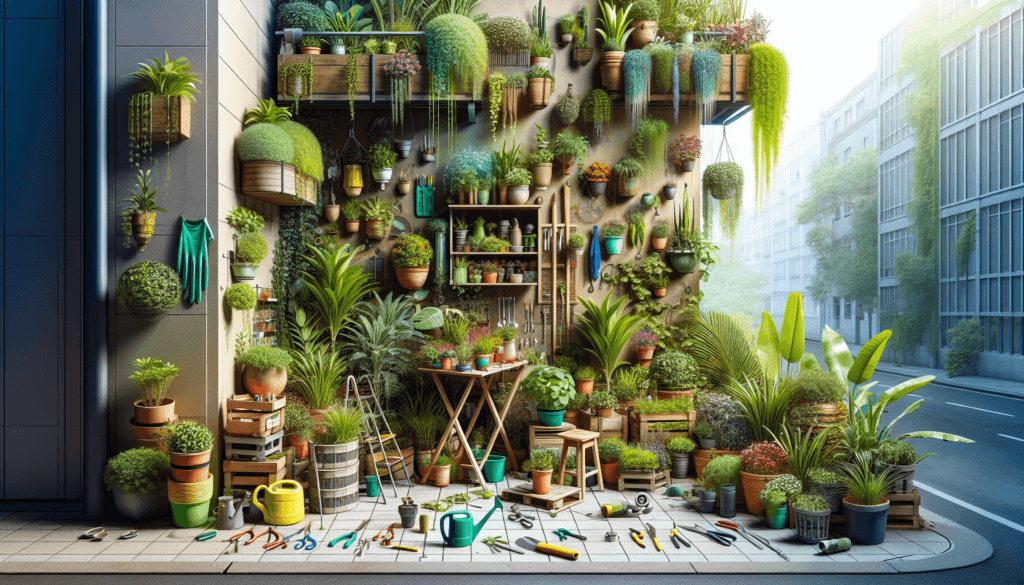
Managing Temperature and Humidity
Properly managing temperature and humidity levels is essential for the well-being of your exotic plants. Monitoring indoor and outdoor temperature, using shade cloth or reflective materials, misting or humidifying for tropical plants, and insulating and protecting in cold weather are all important considerations.
Monitoring Indoor and Outdoor Temperature
Exotic plants come from diverse climates, and it’s essential to provide them with temperature conditions that closely mimic their natural habitats. Monitor indoor and outdoor temperatures regularly to ensure they are within the optimal range for your exotic plants. Use a thermometer to keep track of the temperature in your urban garden, making adjustments as necessary. Consider placing temperature-sensitive plants near windows or in areas with consistent temperatures to promote their health and growth.
Using Shade Cloth or Reflective Materials
In areas with intense sunlight or high temperatures, using shade cloth or reflective materials can help protect your exotic plants from excessive heat and sun exposure. Shade cloth can be used to filter sunlight and create a more favorable environment for shade-loving plants. Reflective materials, such as aluminum foil or white paint, can be used to bounce sunlight away from your plants, preventing overheating. Assess the specific light and temperature requirements of your exotic plants and provide them with the appropriate level of shade or reflection to maintain their health and prevent stress.
Misting or Humidifying for Tropical Plants
Tropical plants often require higher humidity levels than what is typically found in urban environments. To meet the moisture requirements of your tropical exotic plants, misting or humidifying can be beneficial. Use a spray bottle to mist the foliage of your plants regularly, especially during dry periods or when indoor humidity is low. Alternatively, consider using a humidifier to create a more humid microclimate for your tropical plants. By providing adequate moisture and humidity, you can help your exotic plants thrive and prevent issues related to dry air, such as leaf browning or curling.
Insulating and Protecting Plants in Cold Weather
Exotic plants that are sensitive to cold temperatures require protection to ensure their survival during winter or cold weather conditions. Insulate your plants by wrapping them in frost blankets or covering them with straw or pine needles before the onset of freezing temperatures. Place potted plants near walls or structures that provide additional warmth and protection. Move potted plants indoors or to a more sheltered area during extreme cold snaps. By taking appropriate measures to insulate and protect your exotic plants during cold weather, you can mitigate the risk of frost damage and promote their long-term growth and survival.
Supporting Plants with Trellises and Stakes
Providing proper support for your exotic plants is crucial, especially for those with climbing or vining growth habits. Choosing the right support structures, staking tall plants to prevent toppling, using trellises for climbing and vining plants, and training plants for optimal support are key aspects of plant support.
Choosing the Right Support Structures
Selecting the appropriate support structures for your exotic plants is essential for their optimal growth and development. Consider the growth habits and specific needs of your plants when choosing support structures. For climbing or vining plants, opt for trellises, wire frames, or fences that allow them to grow vertically. Tall or top-heavy plants may require stakes or bamboo supports to prevent toppling or bending under their weight. Choose sturdy and durable materials to ensure that the support structures can withstand the growth of your exotic plants over time.
Staking Tall Plants to Prevent Toppling
Tall and top-heavy exotic plants may require staking to prevent them from falling or bending under their own weight. Place stakes firmly into the ground near the base of the plant, being careful not to damage the roots. Use soft ties or plant tape to secure the stems to the stakes, allowing flexibility for natural movement and growth. Regularly monitor the growth of your plants and adjust the stakes or ties as needed. By staking tall plants, you can ensure their stability and prevent potential damage caused by toppling or bending.
Using Trellises for Climbing and Vining Plants
Climbing and vining exotic plants can benefit from the use of trellises or other support structures. Install trellises or wire frames vertically in your urban garden to provide a framework for the plants to climb and attach themselves. Train the stems or tendrils of your climbing plants onto the trellises, gently tying them as necessary. Monitor the growth of your plants and guide them along the trellises, ensuring they have adequate support and freedom to spread. Using trellises not only helps maximize vertical space but also enhances the aesthetic appeal of your garden, creating a lush backdrop of climbing and vining exotic plants.
Training Plants for Optimal Support
Training your exotic plants for optimal support involves gently guiding their growth patterns and ensuring that they are well-supported throughout their development. Monitor the growth of your plants and adjust their positioning or attachments as necessary. Train the branches or stems of your plants to follow specific pathways or attach to trellises or stakes. Regularly prune and thin out excessive growth to maintain a balanced and well-structured plant. By training your exotic plants for optimal support, you can create visually pleasing displays, maximize space utilization, and prevent potential damage caused by unsupported or unruly growth.
Harvesting and Maintaining Exotic Plants
Knowing the right time to harvest, properly handling and storing harvested plants, continued maintenance for long-term growth, and rotating crops for soil health are all important considerations for harvesting and maintaining your exotic plants.
Knowing the Right Time to Harvest
Each exotic plant has unique harvesting requirements, and knowing the right time to harvest is critical for preserving their flavor, texture, and nutritional value. Research the specific harvesting guidelines for your plants and look for visual cues or physical signs of ripeness. For fruits and vegetables, observe changes in color, size, or texture. For herbs or flowers, wait until they reach their peak flavor or bloom. Harvest your exotic plants early in the day when they are less stressed and contain higher moisture levels. By harvesting at the right time, you can enjoy the best quality produce from your urban garden.
Proper Handling and Storage of Harvested Plants
After harvesting your exotic plants, it’s important to handle and store them properly to maintain their freshness and quality. Handle fruits and vegetables carefully to prevent bruising or damage. Remove any debris or excessive moisture from the harvested plants. For produce that requires refrigeration, store them in clean, well-ventilated containers with the appropriate temperature and humidity settings. For herbs or flowers, trim the stems and place them in a vase of clean water. Regularly change the water and remove any wilting parts to extend their vase life. By properly handling and storing your harvested plants, you can preserve their flavor, appearance, and health benefits.
Continued Maintenance for Long-term Growth
Maintaining your exotic plants beyond the harvesting phase is crucial for their long-term growth and productivity. Continue to provide adequate water, nutrients, and monitoring for pests or diseases. Prune your plants as necessary to remove dead or damaged parts and promote healthy growth. Adjust support structures or trellises as the plants continue to grow. Assess the soil conditions regularly and make amendments or add organic matter as needed. By providing ongoing care and maintenance, you can ensure the sustained health and productivity of your exotic plants in your urban garden.
Rotating Crops for Soil Health
To maintain the health and fertility of your soil in your urban garden, consider implementing crop rotation practices. Crop rotation involves changing the type of plants grown in specific areas of your garden from one season to another. This helps prevent the depletion of specific nutrients and the buildup of pests or diseases associated with certain plants. Rotate your exotic plants in a planned sequence, ensuring that plants from the same family or with similar nutrient requirements are not grown in the same area consecutively. By implementing crop rotation, you can promote soil health, reduce the risk of pests or diseases, and maximize the long-term productivity of your urban garden.
By following these comprehensive tips for growing exotic plants in a small space, you can create a vibrant and flourishing urban garden. From choosing the right plants to providing adequate care and maintenance, you can experience the joy of cultivating and enjoying the beauty of exotic plants right in your own urban oasis. Happy gardening!

